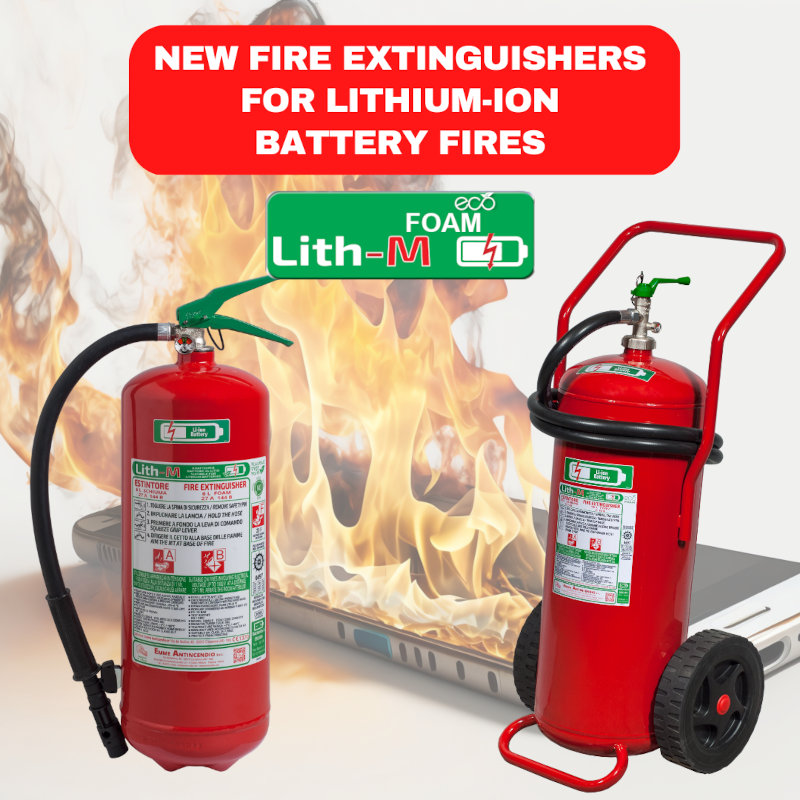Action must be taken early on the fire start and gradually on the battery, preferably with extinguishing agents that allow the cells to cool down. The safety of the occupants of the premises and the people involved in the fire start is always paramount. In the presence of battery release gases and smoke, in an enclosed space, respiratory protective equipment must be worn if it is not possible to leave the room.
With batteries that have a plastic casing, not only the thermal risk, as with all batteries, must be taken into account, but also splinters from the casing containing the cells can be a high risk.
When storing large and possibly high-powered batteries or many small batteries in many packaging units, there are no fire prevention guidelines to date, which is why fire protection concepts must be developed in individual cases. Especially when fighting fires from batteries containing lithium, it is important to prevent chain reactions of individual cells and to contain the fire quickly and effectively from a safe distance directly on the burning battery or to allow controlled combustion.
Water-based extinguishing agents applied by spray jet have proven to be the preferred means for this purpose. Through the cooling effect of water, it effectively prevents a fire from spreading to battery cells that have not yet reached the critical temperature for ignition. The 'thermal runaway' that occurs within a cell is also slowed down. As a side effect, water-based extinguishers are often also suitable for any surrounding fires that may occur. Emme Fire Extinguishers with these characteristics are safe and certified according to EN 3 and EN 1866. Thanks to voluntary testing, EN 3 extinguishers are able to fight fires on lithium batteries up to 750 Wh, and EN 1866 extinguishers up to 5.1 kWh. (data as of publication date March 2023)
Other extinguishing agents such as sand, metal powder or similar substances are only suitable as extinguishing agents to a limited extent, as they only cover the source of the fire. The covering effect therefore favours 'thermal runaway'. When the cover is removed, the sudden supply of oxygen to the still-warm fire can cause a strong deflagration. These 'extinguishing agents' are therefore more likely to protect the environment. CO2 and nitrogen only have a very short and low cooling effect and are therefore not really suitable.


